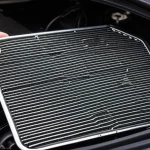Step-by-step carburetor disassembly for the Kawasaki KZ1000
Disassembling the Kawasaki KZ1000 carburetor requires careful attention to detail and a clear plan for motorcycle maintenance. Begin with a solid safety checklist and initial preparation: ensure the engine is cool, disconnect the battery, and work in a well-ventilated area to avoid inhaling fuel vapors.
Start by removing the carburetor from the motorcycle frame. Once detached, focus on identifying the key carburetor parts such as the float bowl, jets, needle valve, and throttle slides. Carefully loosen the screws securing the float bowl to avoid damaging the gasket. Extract the jets with precision tools, noting their sizes and positions for reassembly.
Also read : Step-by-step guide: master the art of installing crash bars on your kawasaki versys 300
Organising small parts is critical to prevent loss and confusion during reinstallation. Use labelled containers or magnetic trays to store screws, springs, and other tiny components. Keeping a detailed photo record or diagram alongside the parts enhances accuracy in reassembly. This level of care in Kawasaki KZ1000 carburetor disassembly ensures effective cleaning, inspection, and future performance.
Deep cleaning processes for KZ1000 carburetors
When it comes to carburetor cleaning for the KZ1000, thoroughness ensures optimal engine performance and longevity. Proper KZ1000 carburetor maintenance involves distinct cleaning techniques, each targeting specific buildup and residue types.
Additional reading : Unlock the perfect fit: ultimate guide to moto guzzi v9 bobber engine bolt torque specifications
Start with the right cleaning agents: a specialized carburetor cleaner spray effectively dissolves varnish and deposits without harming delicate components. Avoid harsh solvents that can damage rubber or plastic parts inside the carburetor.
The deep cleaning process begins with soaking the carburetor parts. Submerge metal components in the cleaner for sufficient time to loosen stubborn grime. Next, use a soft-bristle brush to gently scrub accessible surfaces and jets, taking care not to scratch or bend small passages. Follow this by air-blasting with compressed air to remove residual particles and ensure all tiny orifices are clear.
During cleaning, inspecting the KZ1000 carburetor for corrosion or damage is crucial. Look closely for signs of rust, pitting, or wear on the floats and needle valves. Early detection of these issues prevents performance loss or potential fuel leaks, ensuring that your carburetor stays reliable.
Adhering to these cleaning techniques not only restores smooth fuel flow but also prolongs the life of your KZ1000’s engine. Deep cleaning is a hands-on process demanding patience and precision but significantly benefits overall vehicle upkeep.
Essential tuning settings and adjustment procedures
Adjusting the carburetor tuning on a KZ1000 begins with establishing a solid baseline using the factory settings. These settings provide a reference point to measure performance and responsiveness before making any modifications. For example, the idle speed is typically set according to manufacturer recommendations, ensuring the engine runs smoothly at a low throttle.
Next, synchronizing carburetor banks is crucial. Unsynchronized carburetors can cause uneven fuel delivery, leading to rough idling or poor acceleration. By carefully adjusting the synchronization screws, each carburetor operates in harmony, maintaining balanced airflow and fuel mixture across all cylinders. This step is essential for maximizing engine efficiency and responsiveness.
Fine-tuning the air/fuel mixture involves adjusting the mixture screws to achieve the optimal balance. A well-adjusted idle mixture produces a stable, smooth throttle response and prevents stalling. Rich mixtures might cause sluggish running, while lean mixtures can lead to hesitation or misfires. Gradual adjustments and testing under varying conditions help find the ideal setting.
By following these steps — starting from KZ1000 tuning settings baseline, synchronizing carb banks, and refining idle adjustments — riders can ensure their machine performs at its best across different operating conditions.
Troubleshooting common KZ1000 carburetor issues
Carburetor troubleshooting is essential when facing performance issues on the KZ1000, especially those tied to fuel delivery problems. One of the most frequent symptoms is rough idling and poor acceleration. To diagnose this, start by inspecting the carburetor jets and needles for clogging or wear, as these parts directly influence the air-fuel mixture. A lean mixture often causes hesitation during acceleration, while a rich mixture results in bogging down. Cleaning the carburetor thoroughly using a carburetor cleaner can restore proper fuel atomization and improve performance.
Fuel leaks and flooding are other common concerns. Check the float valve and float height settings to ensure fuel does not continuously overflow into the carburetor bowl. A stuck float or damaged valve can cause flooding, leading to poor engine response and excess fuel consumption. Replacing faulty parts or adjusting the float height as per manufacturer specifications typically resolves flooding, ensuring correct fuel delivery.
Vacuum leaks and air intake problems can also spoil the carburetor’s effectiveness. Inspect the intake manifold boots and vacuum lines for cracks or disconnections, which introduce unmetered air and lean out the mixture. This condition typically results in unstable idling and power loss. Carefully replacing damaged hoses and sealing joints eliminates these issues, stabilizing the air-fuel balance critical for smooth engine operation.
Understanding these carburetor troubleshooting steps aids in swiftly identifying and fixing common KZ1000 fuel delivery problems, restoring engine performance and reliability.
Recommended tools, diagrams, and setup aids
Precision and clarity in handling your KZ1000 carburetor
To effectively maintain and tune your KZ1000 carburetor, having the right carburetor tools and maintenance equipment is crucial. Essential tools include precision screwdrivers for adjusting jets and screws, a carburetor float height gauge, and small cleaning brushes. These tools allow for delicate disassembly and fine-tuning without damaging sensitive parts.
Using detailed KZ1000 diagrams is invaluable. Such diagrams help you identify and label key components like the throttle valve, jets, and float chamber. This visual aid simplifies complex procedures, guiding you step-by-step through disassembly and reassembly. By labeling parts in the diagrams, you reduce the risk of misplacement or incorrect installation.
Additionally, setup aids such as feeler gauges for gap measurement and compressed air blowers for cleaning passages enhance accuracy and efficiency. Many enthusiasts find that combining these physical tools with leveraged video tutorials and digital resources creates a comprehensive understanding. These resources provide real-time, visual demonstrations of tuning techniques tailored specifically to the KZ1000 carburetor, complementing the technical information shown in diagrams and manuals.
Techniques for optimizing KZ1000 carburetor performance
Enhancing the performance tuning of your KZ1000 carburetor starts with upgrading jets and needles, vital components that directly influence fuel delivery and combustion efficiency. Swapping to larger jets can offer richer fuel mixtures essential for peak performance KZ1000, especially when paired with exhaust or intake modifications designed to boost airflow. Similarly, adjusting needle height fine-tunes mid-range throttle response, balancing power output with fuel consumption.
When fitting aftermarket exhaust and intake systems, it is crucial to recalibrate the carburetor accordingly. These modifications alter the air-to-fuel ratio, so an advanced carb adjustment is necessary to prevent running lean or rich. Lean mixtures may cause overheating or engine damage, while overly rich mixtures waste fuel and reduce throttle response, undermining fuel efficiency gains.
Regularly monitoring the carburetor’s performance by checking spark plug condition, throttle response, and fuel consumption data supports ongoing optimization. Scheduled maintenance ensures that jets remain unclogged and needles operate smoothly, preserving the fine-tuned balance critical for sustained peak performance KZ1000. Employing these techniques collectively secures enhanced power delivery and improved fuel efficiency for your bike.


